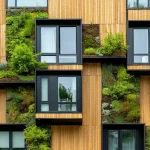When it comes to designing a building, understanding the site is crucial. We can’t just jump into blueprints without first analyzing the environment, local climate, and community context. That’s where architectural site analysis techniques come into play.
These techniques help us gather essential data, ensuring our designs are not only aesthetically pleasing but also functional and sustainable. Whether we’re examining topography, assessing environmental impact, or studying historical context, each method provides unique insights that shape our architectural vision. Let’s explore the top 10 techniques that every architect should master.

Importance of Architectural Site Analysis
Architectural site analysis holds critical importance in design processes. It involves evaluating numerous factors, enabling architects to create highly functional, aesthetically pleasing, and sustainable structures. Examining the site’s topography and environmental aspects ensures we understand its unique characteristics and constraints.
Evaluating topography helps in understanding the site’s elevation, slope, and other geographical features. This knowledge allows us to design structures that naturally fit into the landscape, reducing the need for extensive grading and excavation. It also assists in water drainage planning, preventing potential flooding issues.
Assessing environmental impact involves studying wind patterns, solar exposure, and climatic conditions. By analyzing these elements, we can optimize building orientation, improve natural lighting, and facilitate passive heating and cooling. This approach not only enhances occupant comfort but also reduces energy consumption.
Studying the historical context provides insights into the cultural and historical significance of the site. It ensures our designs respect and integrate with existing landmarks and community values. This approach fosters a sense of continuity and preserves the site’s heritage.
Collecting comprehensive data through site analysis techniques, such as soil testing and vegetation surveys, informs the selection of appropriate building materials and construction methods. This preparation ensures the structure’s safety and longevity while aligning it with the site’s natural attributes.
Incorporating all these factors through thorough architectural site analysis leads to designs that are not only visually appealing but also environmentally responsible and contextually relevant. It’s a foundational step in ensuring that our projects meet high standards of sustainability, functionality, and aesthetics.
Technique 1: Site Observation
Site observation is crucial for gathering firsthand information about a location. It enables architects to identify unique site features and constraints that informed design decisions.
Significance
Observing the site helps us understand its natural and built environment. This technique reveals details about topography, vegetation, water bodies, accessibility, and existing infrastructure. Identifying these elements early in the design process supports the creation of structures that blend seamlessly into their surroundings. Moreover, direct observation can unveil potential issues like soil erosion, drainage problems, and local climate conditions that could impact the design and construction phases.
- Pre-Visit Research: Gather as much information as possible before visiting the site. This includes studying maps, satellite images, and existing site reports.
- Initial Walkthrough: Conduct a comprehensive walk throughout the site. Take notes on the terrain, existing vegetation, water features, and any built structures.
- Photographic Documentation: Capture photographs to document site conditions visually. Focus on key areas such as elevation changes, vegetation, and any potential problem zones.
- Environmental Factors Assessment: Note sun paths, wind directions, and shade patterns. This data helps in designing energy-efficient structures.
- Contextual Analysis: Observe the relationship between the site and surrounding areas. Look at neighboring buildings, roads, and natural features to understand how the site fits into its broader context.
- Accessibility Study: Analyze how accessible the site is—consider points of entry, transportation links, and pedestrian paths.
- Public Interaction: If possible, talk to local residents or nearby business owners. Their insights can reveal valuable information about the site’s history and current challenges.
These steps ensure that we comprehensively understand the site’s characteristics, leading to informed design choices that enhance functionality, aesthetics, and sustainability.

Technique 2: Topographic Survey
Topographic surveys provide crucial information about a site’s elevation, contours, and natural features. Architects use this technique to design structures that efficiently interact with the land.
Tools Required
Several essential tools help conduct a topographic survey:
- Total Stations: Provide precise measurements of angles and distances.
- GPS Units: Offer accurate location data tied to the earth’s coordinate system.
- Digital Levels: Measure elevation changes across the site.
- Drones: Capture aerial imagery for comprehensive site mapping.
- Software: Process data and create detailed topographic maps.
- Accurate Planning: Facilitate precise layout and design adjustments.
- Cost Efficiency: Optimize earthwork and material usage by understanding land variations.
- Risk Mitigation: Identify potential issues like erosion or drainage problems early.
- Regulatory Compliance: Ensure designs meet local building codes and environmental regulations.
- Enhanced Design: Enable designs that harmonize with the natural landscape, improving aesthetic and functional outcomes.
Technique 3: Climate Analysis
Climate analysis assesses the environmental conditions of a site to ensure the design adapts and thrives in its local climate. This evaluation allows for energy-efficient, durable, and comfortable structures.
Key Factors
Key factors in climate analysis include temperature, humidity, wind patterns, and precipitation. We should consider these elements to understand seasonal variations and extreme weather events.
- Temperature: Examining average, high, and low temperatures helps determine suitable building materials and insulation needs.
- Humidity: High or low humidity levels impact materials and indoor air quality. Understanding this helps in designing ventilation systems.
- Wind Patterns: Identifying prevailing winds aids in planning natural ventilation and positioning structures to minimize wind damage.
- Precipitation: Analyzing rainfall and snowfall patterns informs drainage and roofing system designs.

Analytical Methods
Various analytical methods are used for climate analysis. These methodologies help collect and interpret climate data effectively.
- Meteorological Data Gathering: Using weather stations and historical climate data to assess patterns over time.
- Wind Rose Diagrams: Visualizing prevailing wind directions and speeds to optimize building orientation and protection.
- Solar Path Diagrams: Mapping the sun’s path to maximize natural lighting and inform solar shading strategies.
- Climate Modeling Software: Utilizing tools like Autodesk Insight and Climate Consultant to simulate environmental conditions.
By implementing climate analysis, we can ensure our designs are energy-efficient, sustainable, and well-adapted to their environments.
Technique 4: Soil Testing
Soil testing provides critical data about a site’s underground environment. This information guides foundational design and ensures structural stability.
Types of Tests
Different soil tests reveal various characteristics. Standard types include:
- Soil Boring: Drilling to extract soil samples at different depths helps determine stratification.
- Percolation Tests: Assessing soil permeability indicates how well water drains, essential for drainage system design.
- Soil Compaction Tests: Analyzing the soil’s density helps understand whether it can support structures.
- Chemical Tests: Evaluating the soil’s chemical composition detects contaminants and informs material selection.
Why It Matters
Accurate soil data prevent future structural issues. Knowing soil strength and composition ensures foundations and retaining walls are designed correctly. Poor soil data lead to structural failures and unforeseen costs. Soil tests reveal hazards like high water tables and expansive clays, guiding modifications to design and construction methods. For sustainable architecture, they allow the use of soil-friendly materials, preventing ecological damage.
Technique 5: Hydrology Study
Hydrology studies analyze water movement and distribution on and beneath a project site. This technique is critical for preventing water-related issues and ensuring sustainable site development.
Data Collection
Data collection for hydrology studies involves gathering information on precipitation, surface water flow, groundwater levels, and soil moisture. We utilize rain gauges to measure precipitation, stream gauges for surface water, and piezometers to monitor groundwater. Geographical Information System (GIS) tools help map water flow patterns and identify potential flood zones.
Interpretation
Interpreting hydrology data identifies water sources, flow patterns, and areas at risk of flooding. We use hydrological models to simulate water movement and predict the impact of site development. By understanding these patterns, we can design efficient drainage systems and implement water management strategies to mitigate flood risks. This ensures the site’s sustainability and resilience to water-related challenges.

Technique 6: Zoning and Regulatory Review
Zoning and regulatory review is crucial in architectural site analysis. These reviews ensure compliance with local laws and align projects with community standards.
Understanding Local Laws
Local laws, including zoning ordinances, dictate land use and development. Zoning ordinances classify land into categories (e.g., residential, commercial). Approval processes and building codes influence project designs. Reviewing these laws helps identify constraints, reducing legal risks.
Application
Apply zoning and regulatory review by gathering all relevant municipal documents. Examine zoning maps to determine land classification. Check building codes for specifications like height limits and setbacks. Ensuring alignment with these rules aids in obtaining permits and avoids project delays.
Technique 7: Vegetation and Ecology Study
Understanding the site’s vegetation and ecology is crucial in architectural site analysis. This helps in identifying sustainable design opportunities and preserving the local ecosystem.
Assessment Approach
We begin by cataloging existing plant species. Noting their distribution and health provides insights into the soil’s fertility and drainage characteristics. Satellite imagery and GIS tools assist in mapping vegetative cover over large areas accurately.
Next, field surveys involve examining specific plant communities and their interactions with the local fauna. Documenting native and non-native species helps in understanding ecological balance and assessing any invasive threats.
Finally, analyzing climate data such as temperature, rainfall, and sunlight duration aids in determining vegetation patterns and predicting future ecological shifts.
Ecological Impact
We evaluate how construction might affect local flora and fauna. Identifying sensitive habitats ensures we minimize disruption to endangered species. By incorporating green spaces, we can promote biodiversity within the project site.
Environmental impact assessments (EIAs) provide a comprehensive view of potential ecological changes. Mitigation strategies, like using native plants in landscaping, help maintain ecological integrity.
Conserving significant trees and incorporating them into the design preserves natural heritage. Promoting green roofs and vertical gardens enhances urban biodiversity and offers ecological benefits.

Technique 8: Transportation Analysis
Transportation analysis assesses how well a site integrates with various transport modes. This technique identifies potential challenges and opportunities for improving connectivity and accessibility.
Traffic Patterns
We examine existing and projected traffic patterns around the site. Planners use data on vehicle counts, peak hours, and traffic flow directions to avoid congestion. For example, understanding directional flow helps us design entrances and exits that minimize traffic disruptions. Predicting future traffic based on planned developments further ensures our design remains viable years ahead.
Accessibility
Accessibility evaluates how easily people can reach the site using different transport modes. We assess the availability and quality of public transit, pedestrian paths, and bike lanes. For instance, proximity to bus stops and subway stations enhances a site’s attractiveness. Additionally, well-designed sidewalks and bicycle-friendly routes foster a more inclusive environment. Ensuring compliance with ADA guidelines makes our projects accessible to all user groups.
Technique 9: Historical Site Analysis
Historical site analysis is crucial for preserving the past while designing for the future. It identifies a site’s historical significance and assesses how past uses and structures influence current and future projects.
Cultural Significance
We evaluate the site’s cultural significance by researching its historical background. This involves studying old maps, documents, and photographs that reveal its development over time. For example, a site might have been a marketplace or a public square with cultural activities that have shaped the community’s identity. Understanding these cultural layers helps us design buildings that respect and integrate with the site’s heritage.
Conservation Guidelines
Adhering to conservation guidelines ensures that new developments preserve crucial historical aspects. We review local, state, and federal regulations that protect historic landmarks, such as the National Historic Preservation Act. For instance, maintaining the architectural style of a historical facade or using materials compatible with the original structures might be required. This approach harmonizes modern needs with historical preservation, enabling sustainable and contextually sensitive designs.
- advanced site analysis techniques in architecture
- architectural design strategies
- architectural site analysis guide
- architectural site analysis techniques
- architectural site assessment techniques
- architecture site analysis strategies
- best practices in architectural site analysis
- building design enhancement through site analysis
- building design site analysis
- effective site analysis for architects
- improving building design with site analysis
- optimize building design with site analysis
- Site analysis for architecture
- site evaluation for architectural design
- steps in site analysis for architecture
- top architectural analysis methods















Leave a comment